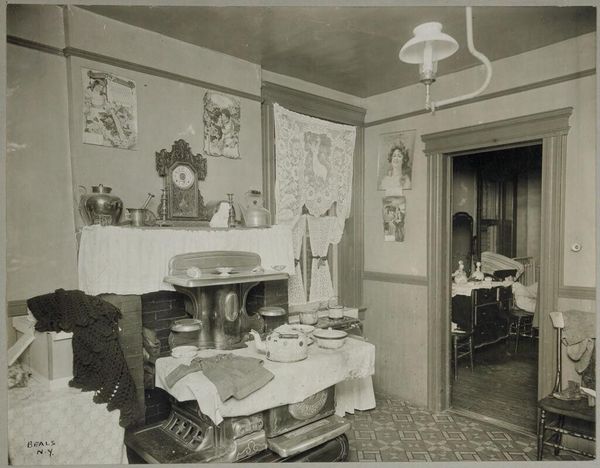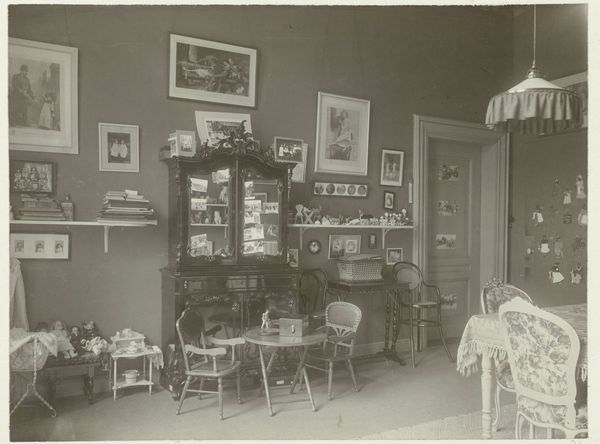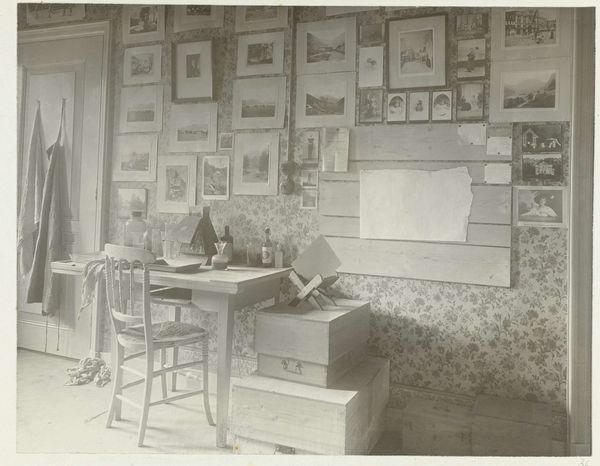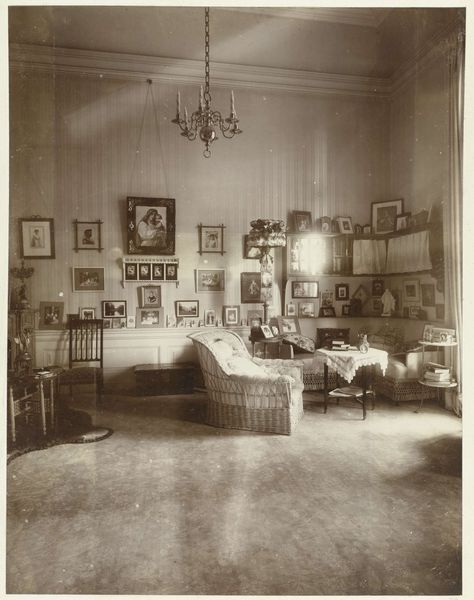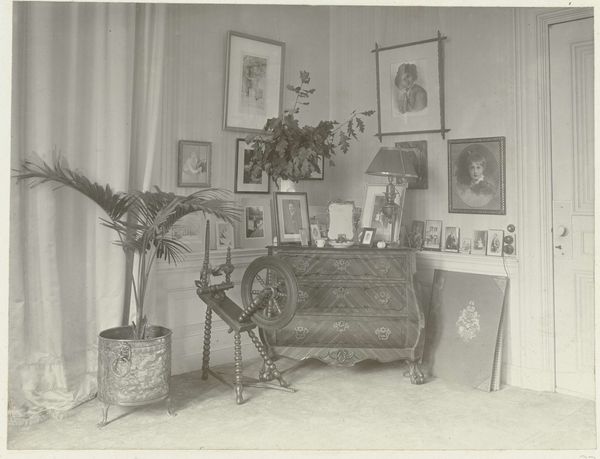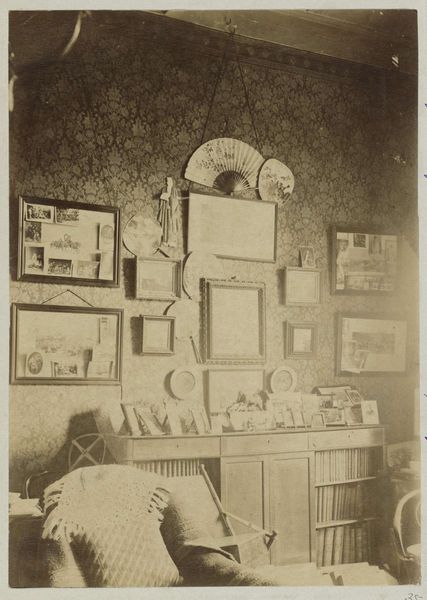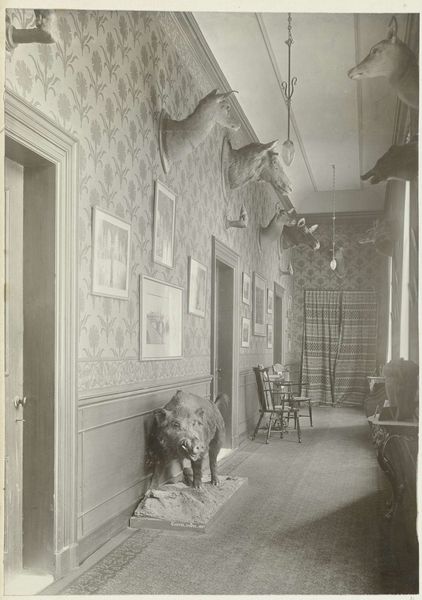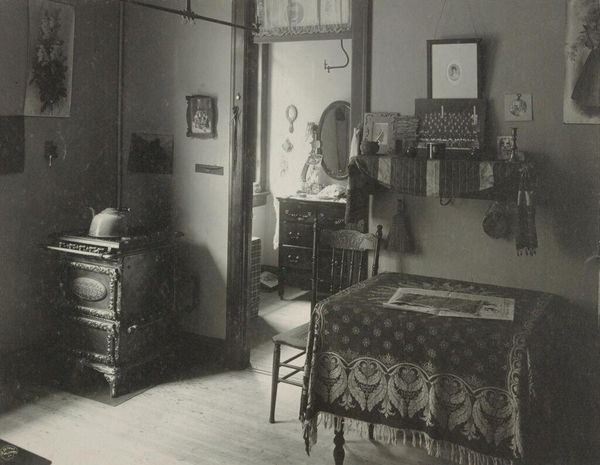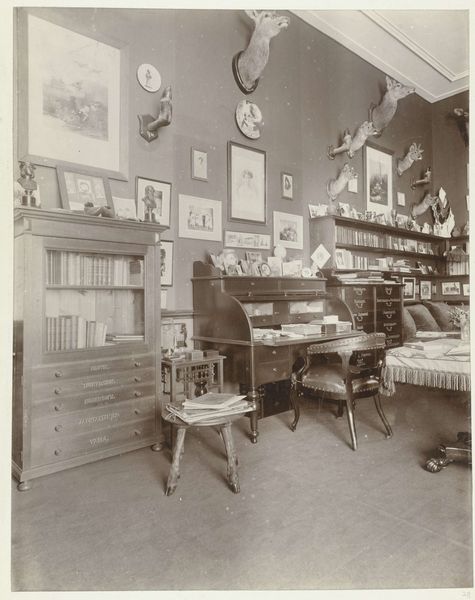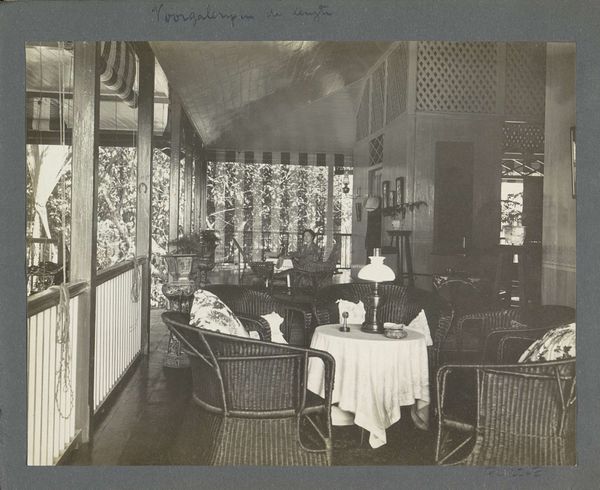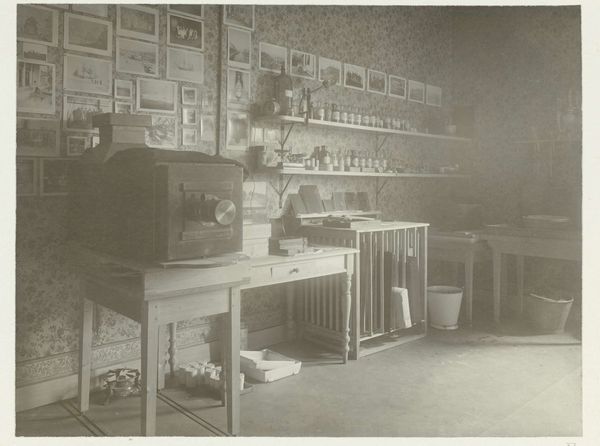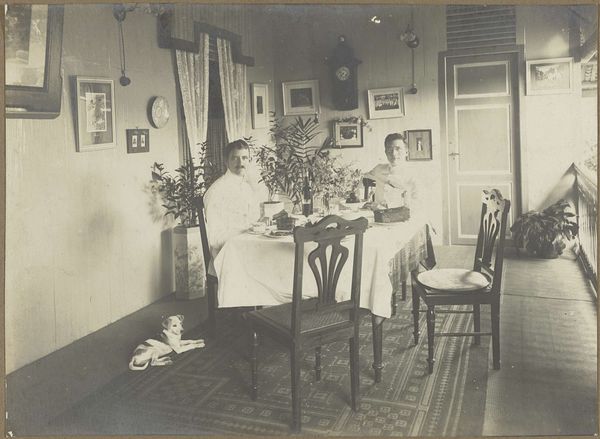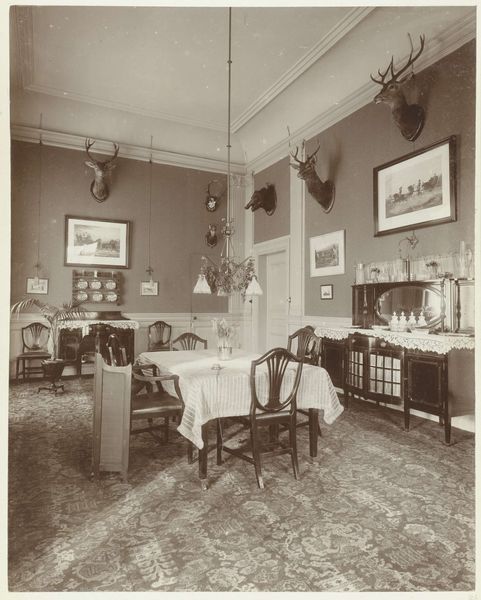
Kamer met kinderhoek in landhuis De Wildbaan, Driebergen 1903 - 1907
0:00
0:00
photography
#
portrait
#
archive photography
#
photography
#
historical photography
Dimensions: height 335 mm, width 520 mm, height 165 mm, width 226 mm
Copyright: Rijks Museum: Open Domain
Curator: Here we have a vintage photograph from between 1903 and 1907, captured by Henry Pauw van Wieldrecht. It’s titled "Kamer met kinderhoek in landhuis De Wildbaan, Driebergen," currently held at the Rijksmuseum. Editor: My immediate impression is one of organized chaos. There's an unsettling tension between the evident wealth and privilege suggested by the spacious room and the sheer volume of toys, and something about its formal photographic representation strikes me as being rather somber and dark. Curator: It is a highly structured composition if you analyze the balance created through the placement of objects within the frame. The shelves overflowing with dolls and plush toys on the right find their counterpoint on the left in the detailed table setting and the fireplace protected by the childproof gate. There is, however, an overriding asymmetry within it that generates unease. Editor: I wonder about the social context of such a room. The photographic record feels almost like an inventory. Were such elaborate displays common among wealthy families at this time, or was this particularly excessive even for the standards of landed gentry? It almost feels as if it is a study of conspicuous consumption in childhood, mirroring adult power dynamics through the acquisition and display of commodities. Curator: Conspicuous, perhaps, but consider also the potential symbolic weight attached to each item. Take the rocking horse. It becomes more than mere entertainment; it embodies a certain notion of idealized youth and, perhaps, of future masculine prowess. These objects signify entry into a carefully coded system of gendered performance and privileged societal expectation. Editor: Do you find that all toys are simply elements encoding these ideologies or a genuine effort to engage children imaginatively? Curator: I believe it functions on multiple levels. There is, of course, an inherent performativity embedded within any constructed environment—but beyond that, if one considers these artifacts as text, open to semiotic interpretation, they become vessels conveying societal norms to the children, teaching them their roles within that particular hierarchy. Editor: This space is undoubtedly visually rich with so many narratives. Reflecting on its composition has me reassessing how material culture impacts identity. Curator: Yes, observing how meticulously everything is curated certainly compels us to see this space not merely as an accidental gathering of possessions but as a meticulously designed microcosm mirroring larger societal frameworks and perhaps shaping the next generation’s worldview.
Comments
No comments
Be the first to comment and join the conversation on the ultimate creative platform.
